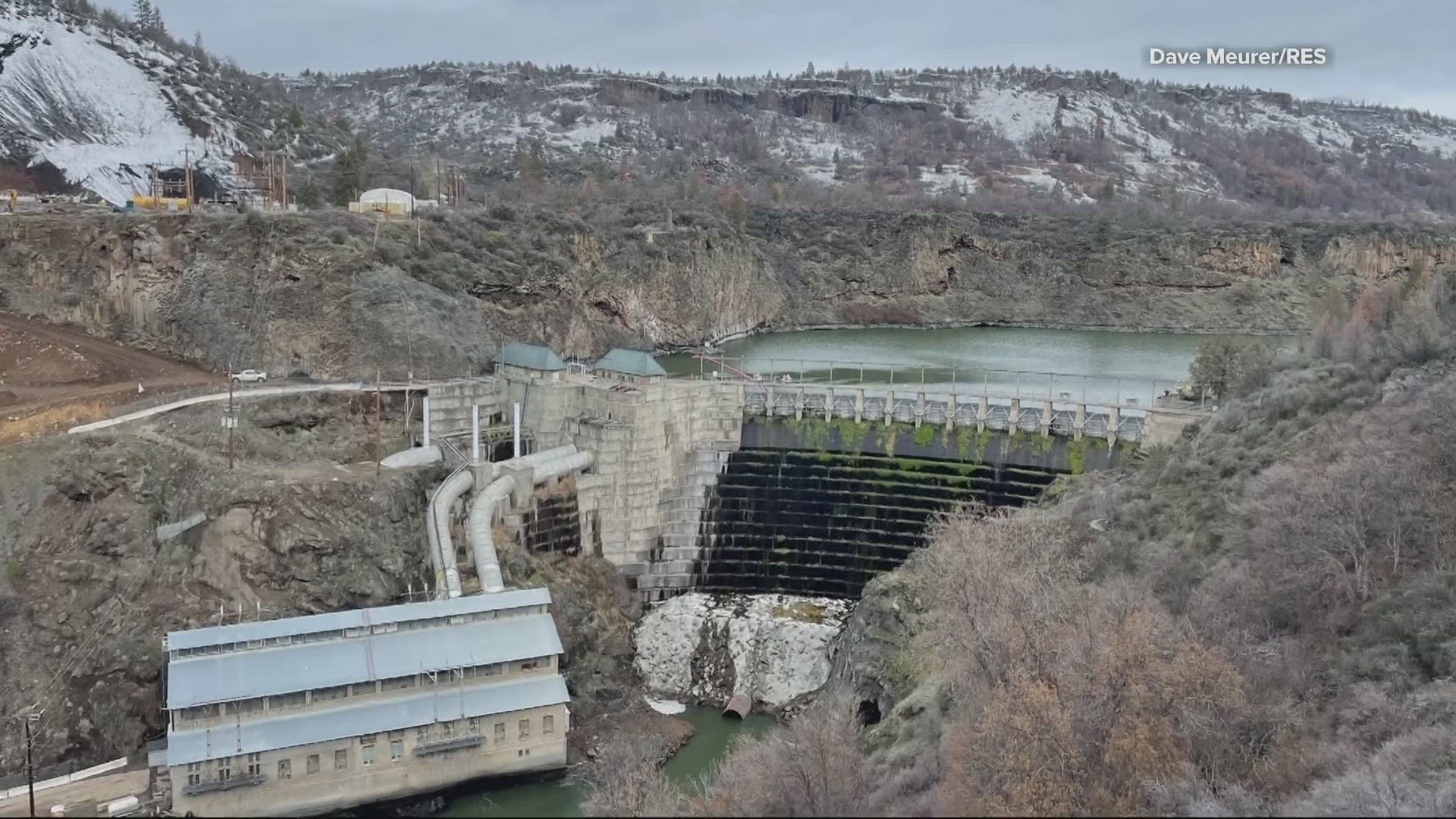PORTLAND, Ore. —
The largest dam removal project in U.S. history continues near the California-Oregon border, where crews are removing four dams on the Klamath River. The project hit a milestone recently as the reservoirs behind the dams began emptying.
“It’s a huge milestone. It's a celebration,” said Lee Rahr, programs director for Sustainable Northwest, one of the nonprofits that’s been advocating for dam removal for decades. “Holes have been placed at the bottom of the dams and we're currently drawing down the water from the reservoirs.”
Nonprofits and local tribes, particularly the Karuk and Yurok peoples, have been pushing to get rid of the dams for many years.
Salmon all over the West Coast have been in decline in recent decades, but especially along the Klamath River, where dams have blocked access to spawning habitat and warm water has caused periodic die-offs of the anadromous fish.
“The Klamath River was once one of the most abundant, strongest salmon rivers in the lower 48,” Rahr said.
Removal of the dams will restore access to roughly 400 miles of prime spawning habitat and help prevent high water temperatures and the toxic algae blooms associated with them.
“With removal, we're going to improve water quantity and water quality. The river will run as it once did,” Rahr said. “We will see salmon return.”
But there will be some water quality impacts in the short term. Over the roughly 100 years some of the dams have stood, massive amounts of sediment have built up behind them — an estimated 17 to 20 million cubic yards' worth.
Rahr said the sediment has been tested and doesn’t contain anything toxic, but it could make waters murky downstream as it washes through the river system and out into the estuary.
But that’s a small price to pay for what Rahr called one of the world’s “largest salmon restoration projects.”
And no one deserves more credit than the tribes, she said.
“This has really been a movement spearheaded and led by the tribes and natural resource nonprofits like Sustainable Northwest and other community partners,” said Rahr.
The reservoirs are gradually emptying now. They could refill slightly in the spring due to runoff from melting snow, but once they are fully drawn down, crews will begin dismantling the infrastructure of the dams themselves.
“It will be running free come September or October,” Rahr said.
Contractors have already begun planting native seeds in areas where the water has started receding and restoration work will be ongoing for years after the dams come out.
“It's really a monumental opportunity to restore and revitalize the whole basin,” Rahr said. “Dam removal is just really the first step.”

